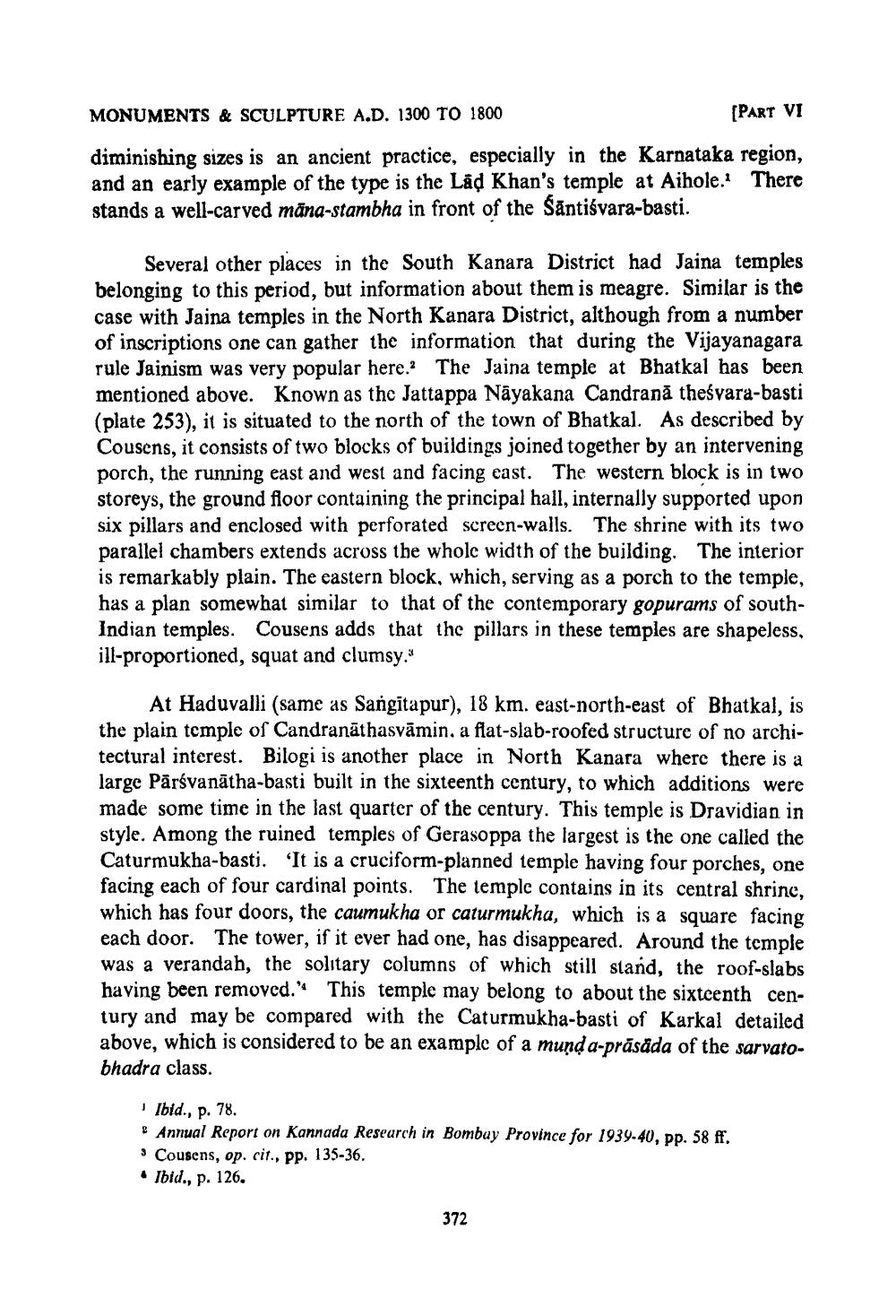________________
MONUMENTS & SCULPTURE A.D. 1300 TO 1800
[PART VI
diminishing sizes is an ancient practice, especially in the Karnataka region, and an early example of the type is the Lad Khan's temple at Aihole. There stands a well-carved mana-stambha in front of the Santiśvara-basti.
Several other places in the South Kanara District had Jaina temples belonging to this period, but information about them is meagre. Similar is the case with Jaina temples in the North Kanara District, although from a number of inscriptions one can gather the information that during the Vijayanagara rule Jainism was very popular here. The Jaina temple at Bhatkal has been mentioned above. Known as the Jattappa Nayakana Candrană theśvara-basti (plate 253), it is situated to the north of the town of Bhatkal. As described by Cousens, it consists of two blocks of buildings joined together by an intervening porch, the running east and west and facing east. The western block is in two storeys, the ground floor containing the principal hall, internally supported upon six pillars and enclosed with perforated screen-walls. The shrine with its two parallel chambers extends across the whole width of the building. The interior is remarkably plain. The eastern block, which, serving as a porch to the temple, has a plan somewhat similar to that of the contemporary gopurams of southIndian temples. Cousens adds that the pillars in these temples are shapeless, ill-proportioned, squat and clumsy."
At Haduvalli (same as Sangitapur), 18 km. east-north-east of Bhatkal, is the plain temple of Candranāthasvāmin, a flat-slab-roofed structure of no architectural interest. Bilogi is another place in North Kanara where there is a large Pārsvanatha-basti built in the sixteenth century, to which additions were made some time in the last quarter of the century. This temple is Dravidian in style. Among the ruined temples of Gerasoppa the largest is the one called the Caturmukha-basti. 'It is a cruciform-planned temple having four porches, one facing each of four cardinal points. The temple contains in its central shrine, which has four doors, the caumukha or caturmukha, which is a square facing each door. The tower, if it ever had one, has disappeared. Around the temple was a verandah, the solitary columns of which still stand, the roof-slabs having been removed." This temple may belong to about the sixteenth century and may be compared with the Caturmukha-basti of Karkal detailed above, which is considered to be an example of a muṇḍa-prāsāda of the sarvato
bhadra class.
Ibid., p. 78.
Annual Report on Kannada Research in Bombay Province for 1939-40, pp. 58 ff.
3 Cousens, op. cit., pp. 135-36. • Ibid., p. 126.
372




